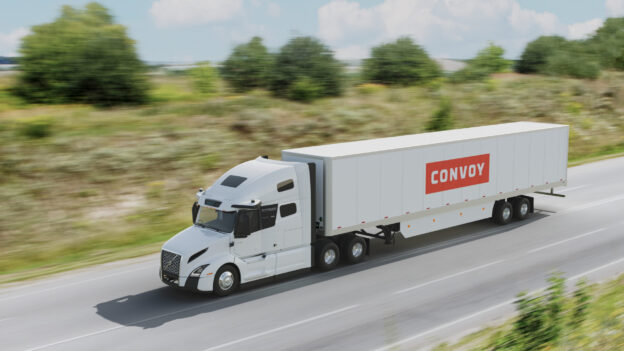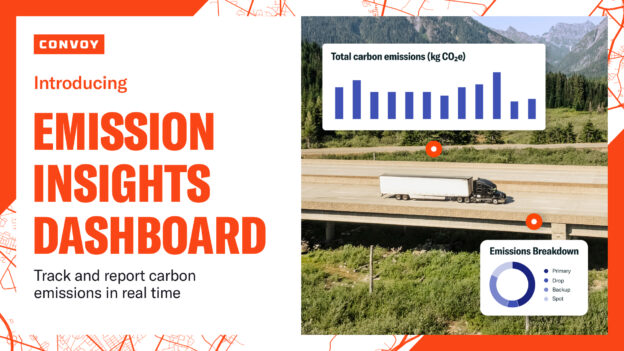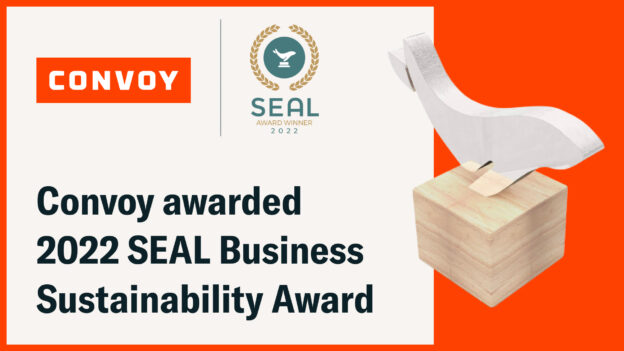The Naked Truth about Laundry
Sustainability • Published on May 12, 2020
Liquid laundry detergent is the most expensive bottle of water you can buy. When you think about it, a large plastic bottle is shipped all over the country to be put into a machine that already has water in it. Transporting big clunky jugs to get the laundry detergent on store shelves or direct to a consumer’s home involves an enormous amount of truckloads — which translates into significant carbon emissions. There has to be a way to clean up this process.

Enter Jonathan Propper, Founder and CEO at Dropps, who joins our video series The Business of Carbon Emissions, to uncover the dirty secret about laundry detergent. Jonathan has a history with detergent — he’s the inventor behind the original laundry pod, and has guided Dropps to a number of firsts, including eliminating dyes and adding bittering agents to deter children from ingesting pods.
To learn more about how companies can clean up their own packaging and delivery operations, we asked Jonathan the following questions:
- How is Dropps different from traditional cleaning companies?
- What are the environmental benefits of Dropps packaging practices?
- How did Dropps decide to make carbon neutral shipping the default for every customer?
- What’s next for Dropps?
Jonathan offers pragmatic advice on what he calls “eliminating the stupid” most companies don’t recognize in their own shipping operations, and provides insights for companies into looking at everything they do to find a better way and temper the influence in the downstream supply chain.
Watch the video or read the transcription below.
You can learn more about The Business of Carbon Emissions and view our other videos on carbon emissions business.
Convoy provides shippers reliable, flexible, and instant capacity when they need it most. Learn more about shipping with Convoy today.
TRANSCRIPTION
Jennifer Wong: Hi everyone. My name is Jennifer. I’m the head of sustainability at Convoy. Convoy has created a series about the business of carbon emissions. You’ll hear stories, research, and innovations to learn about the fundamentals of carbon emissions and how reducing them is not only good for the environment, but also good for business. Today we have Jonathan Propper, founder and CEO of Dropps here to share his story of growing a company that is not only helping consumers really think about purchasing decisions but also really delivering a positive social and environmental impact.
Jonathan Propper: I’m Jonathan Propper, CEO of Dropps.com and I’m here to give you the naked truth about laundry. Size does not matter when it comes to laundry. Let’s start with jugs. Its big alright. Messy too and expensive. You know why? Lots of plastic. Lots of water. Shipped all of the country. From factory to warehouse to retail. That’s what you’re paying for. It’s a dinosaur. We all know dinosaurs are extinct.
Jennifer: Jonathan, welcome.
Jonathan: Thank you so much for including me in your series. I feel honored.
Jennifer: I reached out because I think you have a really fantastic business model. One that really clearly shows that you can grow a profitable business at the same time as showing positive environmental impact, especially in the way that you’ve rethought about your project itself and influence in the downstream supply chain. I’d be curious, can you share a little bit more around how Dropps is different from maybe a traditional cleaning company?
Jonathan: Yeah, sure. First of all, we say liquid laundry detergent is the most expensive bottle of water you can buy, right? It’s shipped all over the country only to be put in a machine that already has water in it.
Jennifer: Right. And look what I just got here just the other day. [2:00] I got this box, the Dropps, and it was so convenient where it just opens it up and…right there.
Jonathan: Perfect. Yeah. WE perforate it becomes in some cases one side is laundry detergent and the other side is dish detergent and the laundry goes in one room and the dish goes under the sink usually. So, again, we’re just trying to make it easy for the customer and, you know, so many times you get a package through ecommerce in a box, right? And inside that box is a package and inside that package is the product. We’re about eliminating the stupid and eliminating the stupid means getting rid of that extra package. So, inside our box is the products Dropps.
Jennifer: I love that you say it’s the most expensive bottle of water. Kind of a full liquid laundry bottle with the plastic and just the volume that it takes up in moving from different manufacturer places directly to the consumer. Can you share a little bit more around the environmental benefits of being able to reduce the size of your packaging in that way where you’re not shipping a box within a box?
Jonathan: Yeah, well not only is it not shipping a box within a box, three truckloads of liquid laundry detergent equals one truck load of Dropps and that’s how much extra space those bottles and that water is taking up. And sure, you know, we want, you know, you want truck routes, but you want smart truck routes, not dumb truck routes and if you can deliver the same amount of wash loads in one truck versus three trucks, that’s just better for everybody. The environment and then, you know, for the distribution channels, [4:00] for the consumer. Also, the consumer is taking in less weight. They can buy more wash loads at a time so also, perhaps, less shipments because they have more room to store because they’re only storing what’s cleaning their clothes as opposed to storing what looks good on a shelf and takes up a lot of space.
Jennifer: Sure. And one thing that I noticed when I went to your website to buy my first shipment of Dropps Laundry Pods, you offer to ship carbon neutral for every customer, kind of by default. Can you share more around how that got started?
Jonathan: Yes, I mean, you know, we just try to look at everything we do and try to do it better and, first of all, we’re into slow shipping. Which means we don’t ship anything by air. We set up a subscription program so people can get their product exactly when they want it but that allows us to just ship it ground throughout the country. And then for the additional footprint, the carbon footprint, we buy offsets to make sure that we’re neutral and, obviously, the goal is to be negative. As you move forward. And those offsets are used to convert that gas that is in landfills into energy that can be used.
Jennifer: And you mentioned that the goal is to be carbon negative, I think sustainability is a journey for every company. As we wrap up, can you share what is next on your horizon as a company?
Jonathan: Yeah, you know, in society, we’re trying to get rid of label, right? As, we’re kind of identifying people as labels. Well in the same way we’re eliminating labels on our packaging and instead printing all the information directly on the box, therefore, not only reducing the cost of the label, the cost of putting on a label. So, it just shows how doing something in a more sustainable way is actually a more cost-efficient way. The two are not mutually exclusive whatsoever.
Jennifer: Awesome. Well thank you so much for sharing your story today.
Jonathan: Yeah, dropps.com. That’s D-R-O-P-P-S dot com.



